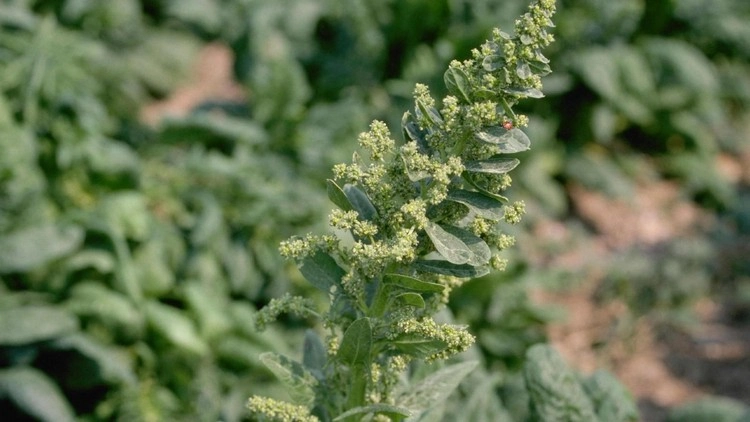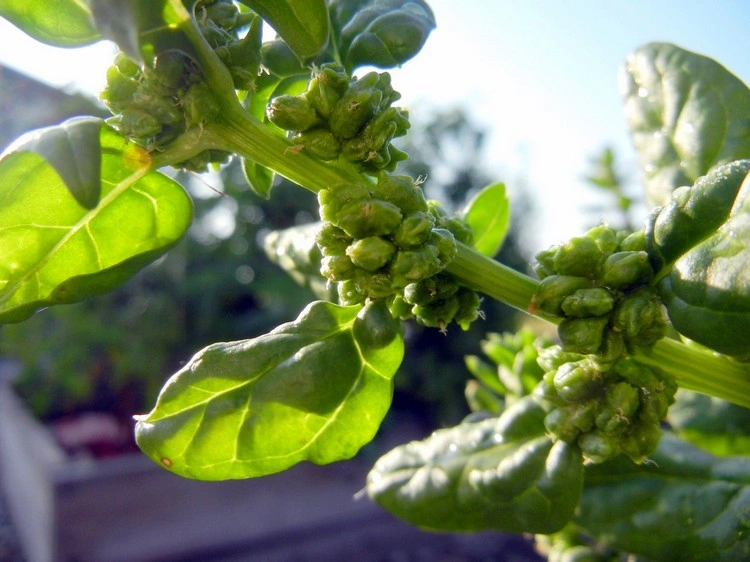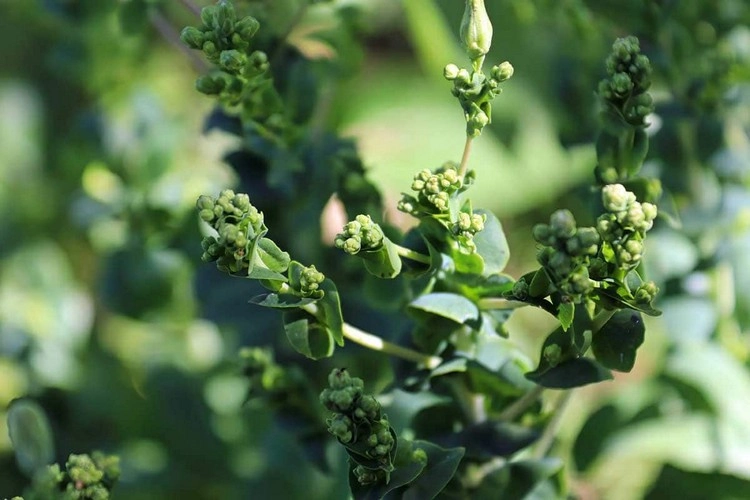Spinach is one of the fastest growing leafy greens. It tastes great when young in salads and when ripe as a steamed side dish. Sometime during harvest time, when you’re ready to gather some of the tasty and healthy leaves, you’ll find your spinach blooming. Find out what that means and can you eat spinach when it’s in bloom in this article!
These are the signs that your spinach is blooming
When you first grow spinach, you might miss the first signs of flowering. These usually appear on the leaves. The round and fleshy leaves suddenly become smaller and pointed like an arrowhead.
This is followed by a thick stalk that grows out from the center of the plant. The longer it grows, the smaller the leaves become. The spinach will also grow taller overall as the stems continue to grow at the expense of the leaves. The shooting of the spinach describes the beginning of the formation of flowers. Once the main stem has reached its full height, small flowers appear on the sides.
The flowers are pollinated, then they wither and seeds develop in their place. When the seeds are ripe, the plant dies after completing its task.
What are the causes of spinach shooting

There are many causes that can lead to the end of your spinach’s life cycle, and they all have to do with the growing conditions of the vegetable. Usually, however, high temperature is the most common reason. Spinach is a cool season plant that prefers temperatures between 5 and 23°C. If temperatures rise above this level for more than a short period of time, the spinach will likely shoot and bloom.
If the spinach feels that it can no longer be productive due to lack of nutrients in the soil, poor watering, or too much competition from other plants in its vicinity, this can also speed up the flowering process.
In short, anything that makes your spinach feel like it can’t thrive any further will speed up its flowering.
Spinach is already blooming – what can you do

Unfortunately, once the flowering process has started in the spinach plant, there is no stopping it. Shooting is a defense mechanism that causes the plant to devote its resources to developing flowers and seeds to sustain the species. There is nothing you can do to stop or reverse this natural phase of development.
Just enjoy the spinach flowers, which will feed beneficial insects, including bees. Wait until the seeds have completely dried and the plant will begin to turn brown. Then you can safely collect the spinach seeds in an envelope. Seal and store in a cool, dry place until ready to sow the seeds again in the next growing season.
Preventative Measures You Can Take

And while the flowering process, once triggered, is irreversible, there are some preventive measures you can take to ensure your spinach produces tasty leaves for as long as possible.
Keep your spinach in good condition: Spinach needs a humus rich, well-drained soil. So it’s a good idea to plant it in one that has been supplemented with compost.
Space mature spinach plants about 10-15 cm apart: Not only does this spacing mean your spinach isn’t competing with its neighbors, but it can also help reduce the risk of disease and pest infestations.
Keep the spinach well watered: In the warmer months, the spinach should be in moist, well-drained soil. Otherwise, he might feel threatened and trigger the flowering process.
In summer it is also a good idea to protect him from the strong sun by providing him with temporary shade. For this purpose, you can build or adapt some kind of canopy. Keep in mind that more than 14 hours of sun per day is enough for most spinach strains to appear to have reached the end of their development and are entering the flowering phase.
Harvest spinach leaves regularly: Be sure to harvest the spinach’s outer leaves regularly to encourage the plant to produce more. Remember, spinach leaves can be eaten fresh, cooked, or frozen for later use.
Find out how to pick and preserve the leafy greens here!
Is flowering spinach edible?
Spinach is known for its juicy and green leaves. But once the spinach blooms, those delicate leaves turn bitter and stringy. Whether you want to eat them raw or cook them, not only do they not taste good, but they have no health benefits either.
